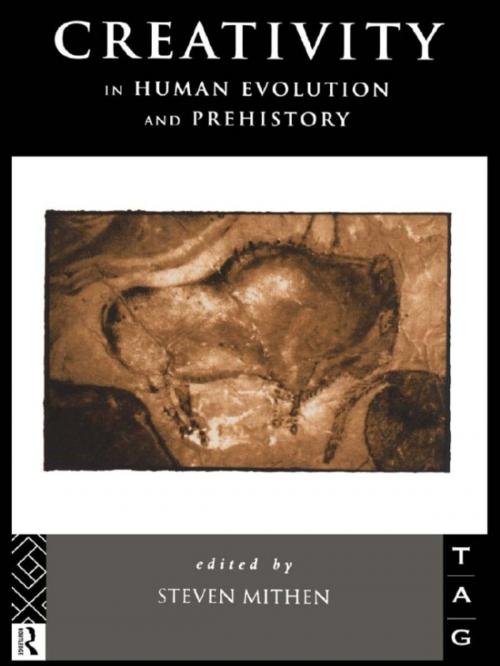Creativity in Human Evolution and Prehistory
Nonfiction, Social & Cultural Studies, Social Science, Archaeology| Author: | ISBN: | 9781134720125 | |
| Publisher: | Taylor and Francis | Publication: | August 10, 2005 |
| Imprint: | Routledge | Language: | English |
| Author: | |
| ISBN: | 9781134720125 |
| Publisher: | Taylor and Francis |
| Publication: | August 10, 2005 |
| Imprint: | Routledge |
| Language: | English |
We live in a world surrounded by remarkable cultural achievements of human kind. Almost every day we hear of new innovations in technology, in medicine and in the arts which remind us that humans are capable of remarkable creativity. But what is human creativity? The modern world provides a tiny fraction of cultural diversity and the evidence for human creativity, far more can be seen by looking back into prehistory. The book examines how our understanding of human creativity can be extended by exploring this phenomenon during human evolution and prehistory.
The book offers unique perspectives on the nature of human creativity from archaeologists who are concerned with long term patterns of cultural change and have access to quite different types of human behaviour than that which exists today. It asks whether humans are the only creative species, or whether our extinct relatives such as Homo habilis and the Neanderthals also displayed creative thinking. It explores what we can learn about the nature of human creativity from cultural developments during prehistory, such as changes in the manner in which the dead were buried, monuments constructed, and the natural world exploited. In doing so, new light is thrown on these cultural developments and the behaviour of our prehistoric ancestors.
By examining the nature of creativity during human evolution and prehistory these archaeologists, supported by contributions from psychology, computer science and social anthropology, show that human creativity is a far more diverse and complex phenomena than simply flashes of genius by isolated individuals. Indeed they show that unless perspectives from prehistory are taken into account, our understanding of human creativity will be limited and incomplete.
We live in a world surrounded by remarkable cultural achievements of human kind. Almost every day we hear of new innovations in technology, in medicine and in the arts which remind us that humans are capable of remarkable creativity. But what is human creativity? The modern world provides a tiny fraction of cultural diversity and the evidence for human creativity, far more can be seen by looking back into prehistory. The book examines how our understanding of human creativity can be extended by exploring this phenomenon during human evolution and prehistory.
The book offers unique perspectives on the nature of human creativity from archaeologists who are concerned with long term patterns of cultural change and have access to quite different types of human behaviour than that which exists today. It asks whether humans are the only creative species, or whether our extinct relatives such as Homo habilis and the Neanderthals also displayed creative thinking. It explores what we can learn about the nature of human creativity from cultural developments during prehistory, such as changes in the manner in which the dead were buried, monuments constructed, and the natural world exploited. In doing so, new light is thrown on these cultural developments and the behaviour of our prehistoric ancestors.
By examining the nature of creativity during human evolution and prehistory these archaeologists, supported by contributions from psychology, computer science and social anthropology, show that human creativity is a far more diverse and complex phenomena than simply flashes of genius by isolated individuals. Indeed they show that unless perspectives from prehistory are taken into account, our understanding of human creativity will be limited and incomplete.















